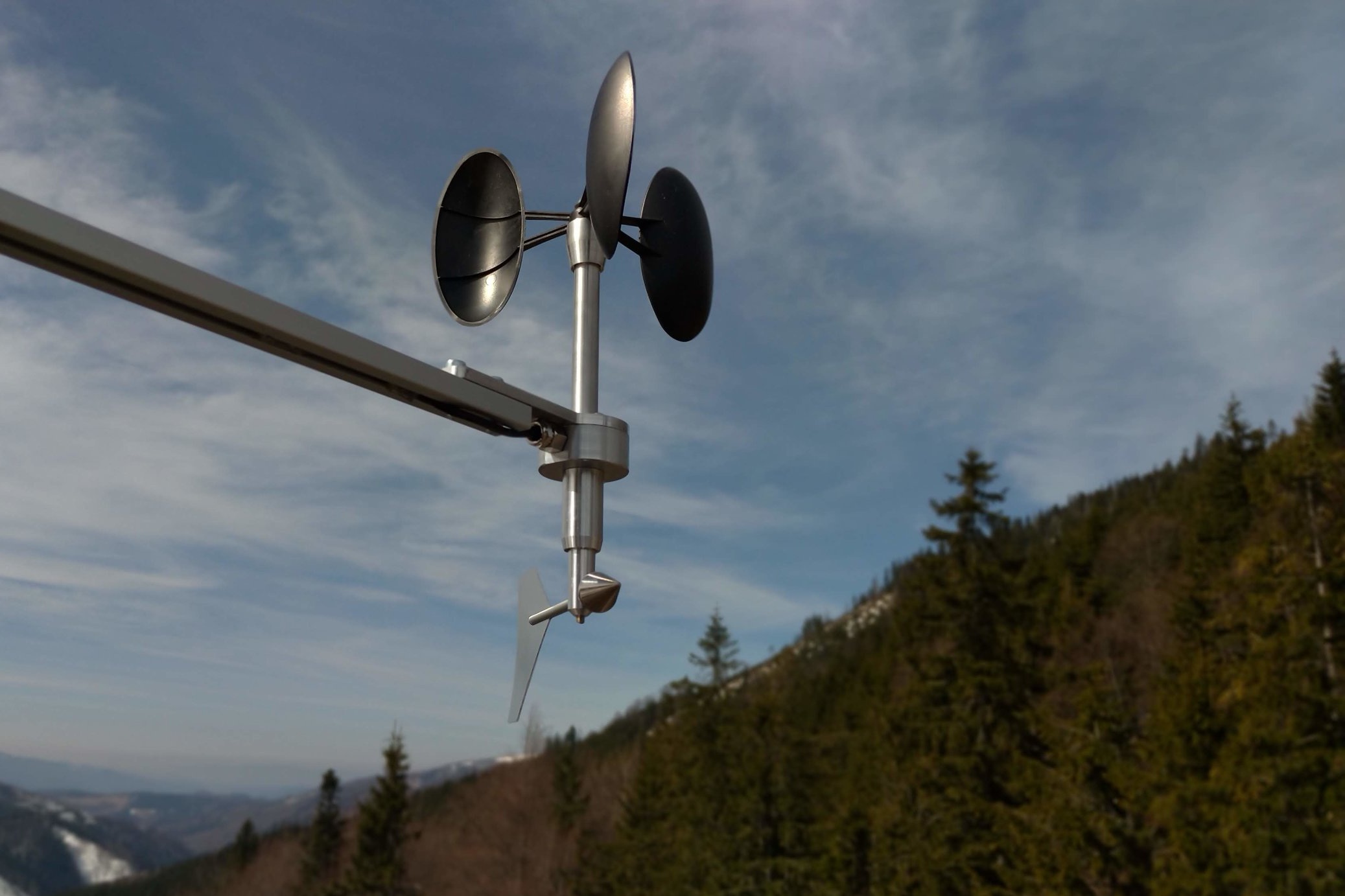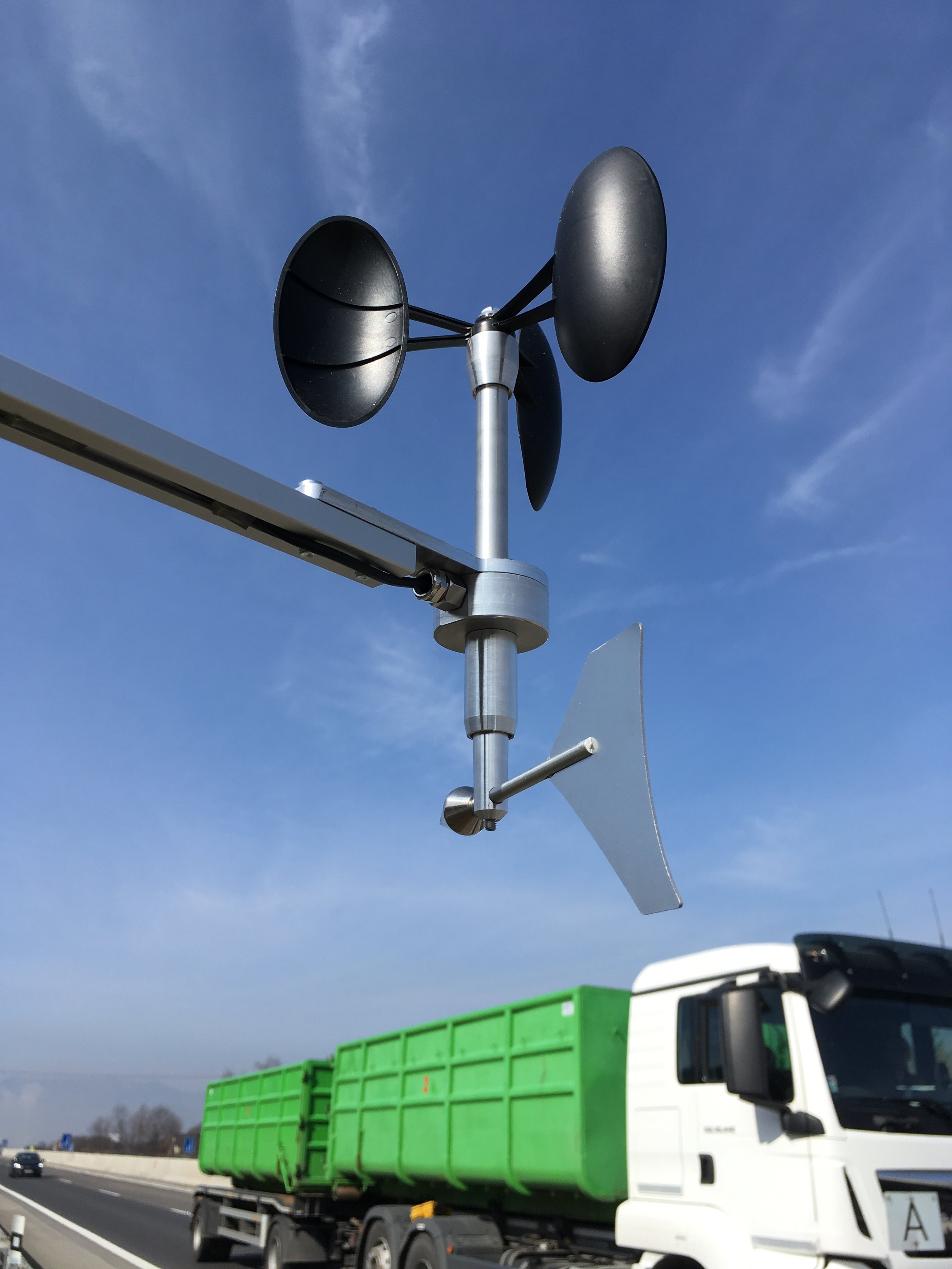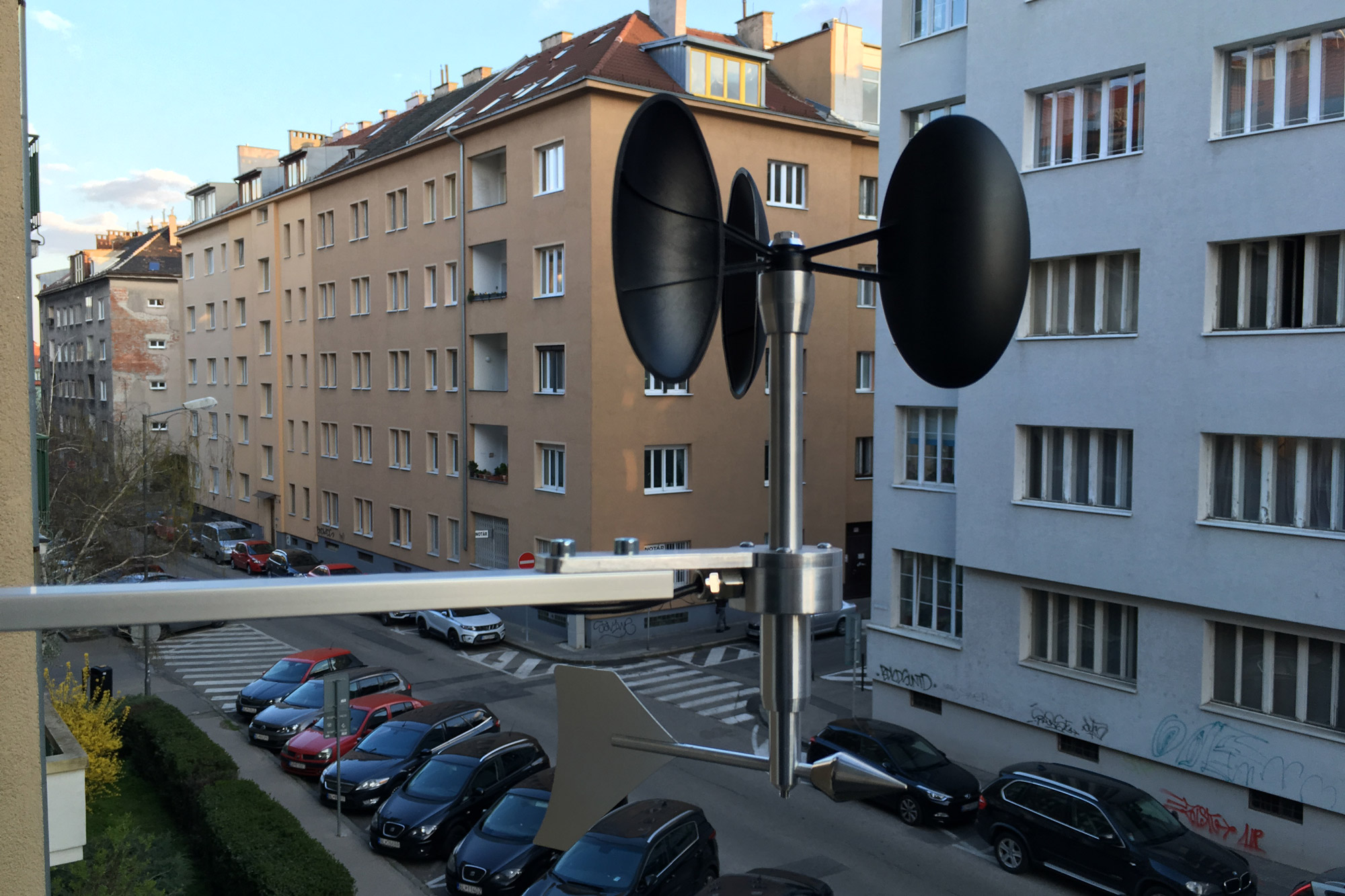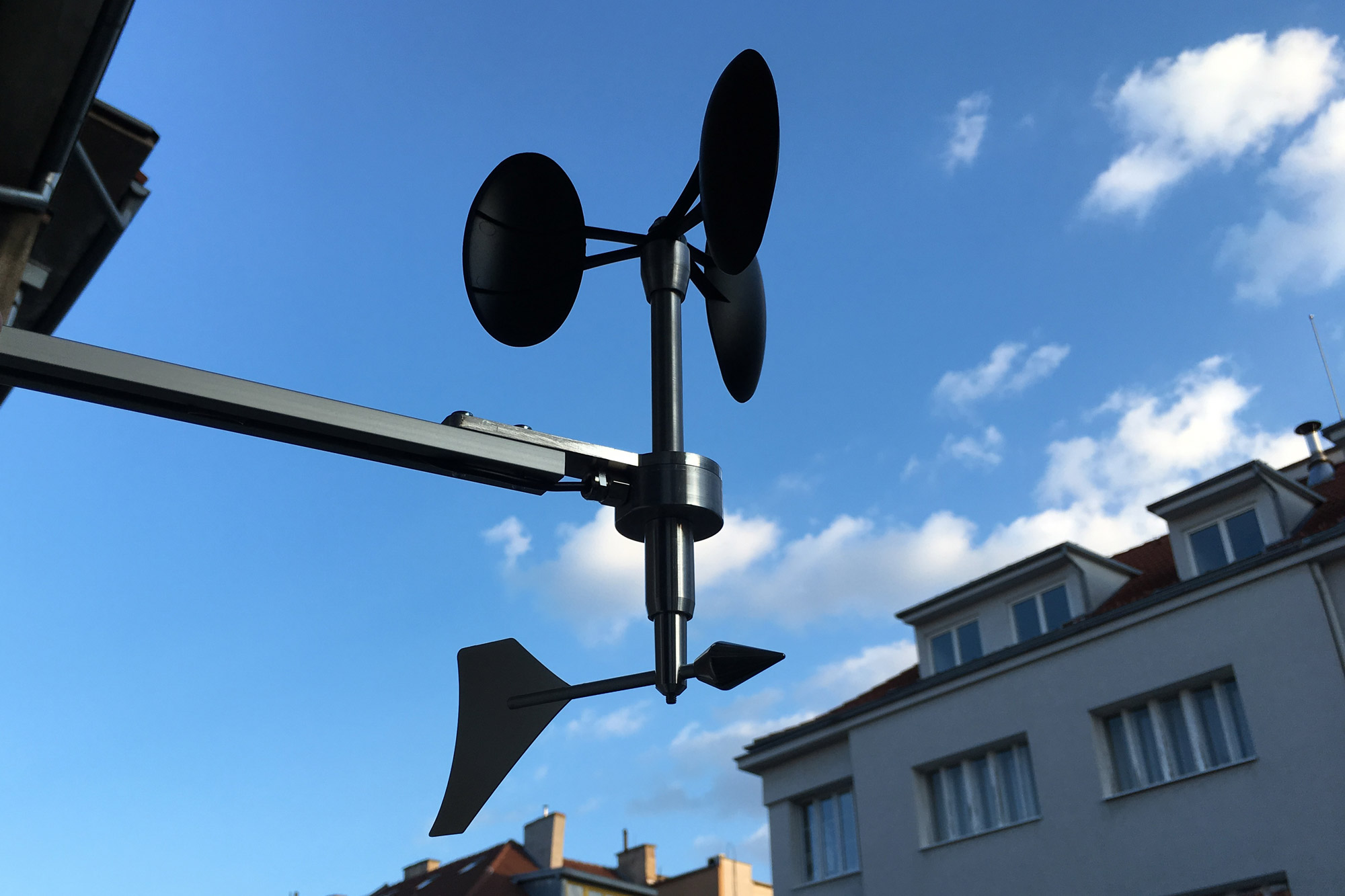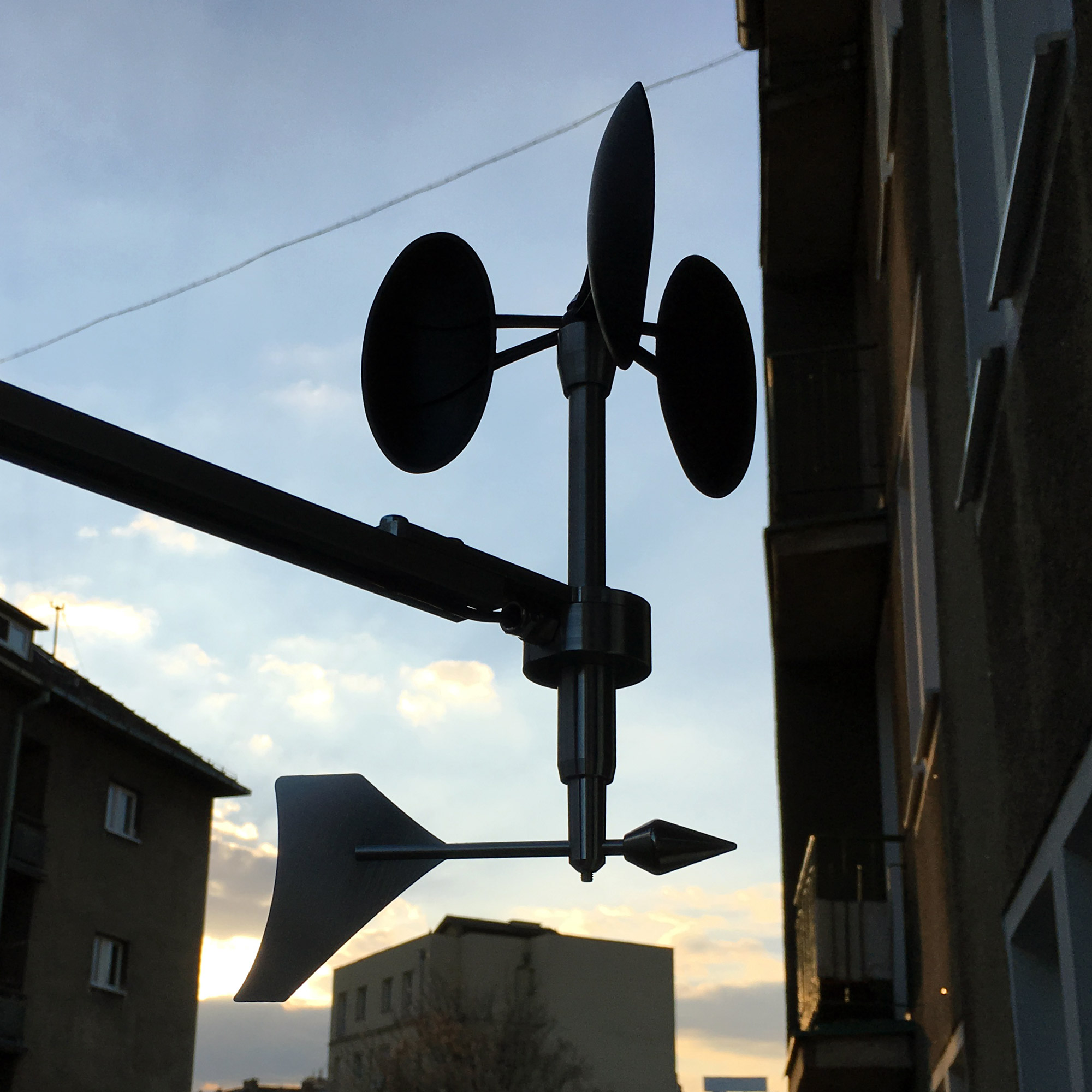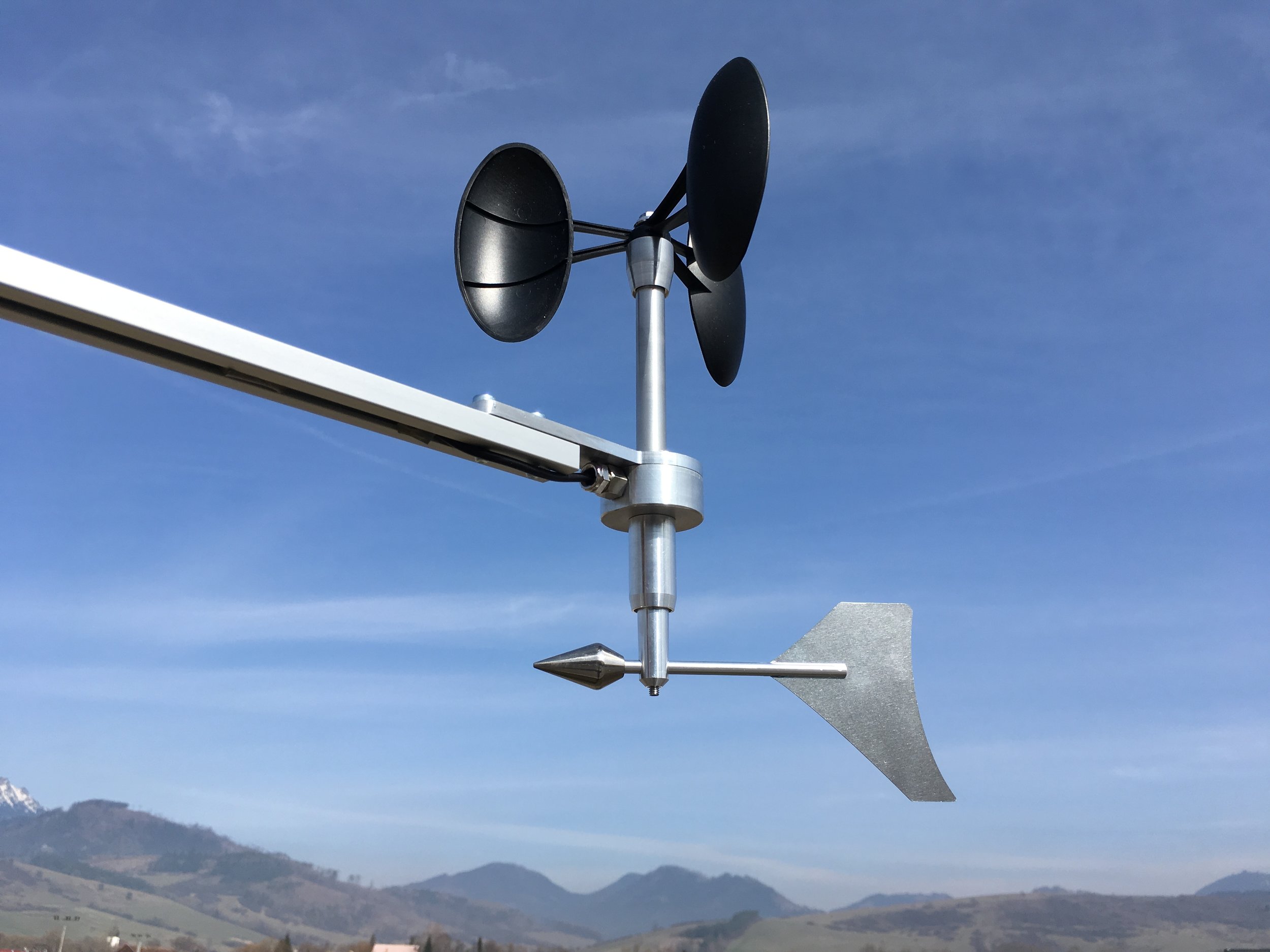WMO conforming compact anemometer with a wind vane
Elliptic cups create high accuracy and good data consistency in all weather with superb performance in snowy conditions.
Robust easy to replace bearings and cups for easy field maintenance. Elliptical cup design offers large wind blown area for high torque and very-low starting speeds.
Very low starting wind speed of less than 0.2 m/s
Excellent linearity and accuracy meeting all World Meteorological Organization (WMO) measurement requirements.
Excellent off-axis response with a very low distance constant due to reed switch operation.
Flat elliptic cups offer resistance to snow buildup improve snow shedding over conical and spherical cups.
Analog outputs for compatibility with all existing meteorological data loggers.
Digital pulse output for wind speed with two pulses per revolution generated by a high speed reed switch for consistent and clean wind speed signal.
Analog 0 V to 2.5 V wind direction signal generated by the robust all-metal wind vane is compatible by all meteorological data loggers.
WHY ELLIPTIC CUPS ARE BETTER
Elliptical cup shape
Patented elliptical design offers a larger wind blown area than circular and conical cups for higher aerodynamic torque to overcome bearing friction. Result is more consistent anemometer response throughout the complete air temperature range.
Benefits
Low starting speeds
Long-term dirt, dust and sand resistance created by the use of larger bearings which offer long-term measurement stability not effected by dirt
Reduces effects of rain and snow on anemometer linearity
Elliptical cup cross-section
Aerodynamic stability in all-weather and throughout the complete wind speed range is a result of the elliptical cup cross section. Elliptical cup cross section is a very stable aerodynamic shape.
Benefits
High full-scale linearity throughout the whole wind speed range
Rain and dirt buildup on cups have minimal influence on measurement stability
Flat elliptic cups reduce ability for snow buildup on anemometer cups
Superb off-axis response for reliable data in turbulent environments
WIND VANE & SAFETY FEATURES
All metal wind direction vane
Efficient all metal design with superb response rate and good aerodynamic damping to prevent overshoots and reduce wind data noise. Held in place by two oversize stainless steel ball bearings for robustness and dirt resistance.
Benefits
Fast response and low rotational inertia
Low starting wind speed <0.2 m/s
Long-term dirt, dust and sand resistance created by the use of two oversize bearings for long-term measurement stability and strength
All-metal construction for strength and long life
Lightning protection
2-stage lightning protection against over-voltage, over-current, high speed voltage & current transients, and reverse polarity gives MeteoWind Compact electrical reliability.
Lightning protection meets the following international standards for industrial equipment safety:
EMC Emissions according to EN50081-1 / IEC61000-6-1
EMI Transients according to EN50081-1 / IEC61000-6-2
ESD 4000 V (4 kV)
OVERVIEW & TECHNICAL FEATURES
Combined sensor advantage
Two instruments for the price of one
Lower power requirements than two separate instruments
One sensor, one mount - simpler than two mounts for two sensors (anemometer & wind vane)
Less cable, less connections & less electronics equals higher reliability
Accurate measurement
Very low starting speed (< 0.2 m/s)
Good full-scale linearity
Very low distance constant (< 1 m) with minimal over-speeding
Technical features
Rugged all-metal anodized aluminum housing and wind vane
Tough fiber reinforced cups from FRP material
Corrosion resistant anodized aluminum body
Versatile analog sensor communication interface:
Pulse wind speed output (reed switch)
Analog lightning protected 0…2.5V voltage output for wind direction
MeteoWind Compact offers reduced cost of ownership and reliability compared to separate wind vane & anemometer installations for long-term economic benefits for industrial and AWOS weather station operators.


